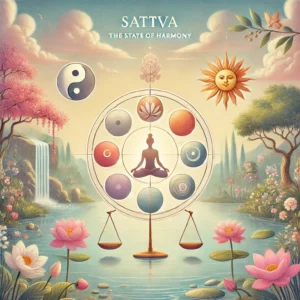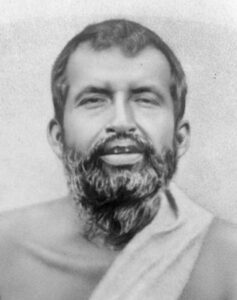Why is Śrīmad-bhagavad-gītā, important to sanātana-dharma?
Acknowledgement –
School of Yoga is profoundly grateful to Saṃskṛta scholars and academics Pijus Kanti Pal (pal.pijuskanti@gmail.com) and Dolon Chanpa Mondal for their support in Saṃskṛta transliteration and quality control.
Please find the available links for my book, A Seeker’s Śrīmad-Bhagavadgītā.
 SM Shop: https://shop.storymirror.com/seekers-srimad-bhagavad-gita/p/16se70d4slmag95l1
SM Shop: https://shop.storymirror.com/seekers-srimad-bhagavad-gita/p/16se70d4slmag95l1
SM Shop (ebook): https://shop.storymirror.com/seekers-srimad-bhagavad-gita-ebook/p/16se70ihklmytr7gi
Amazon India: https://amzn.to/4813869
Amazon US: https://www.amazon.com/dp/B0CHLFPB8X
Amazon UK: https://www.amazon.co.uk/dp/B0CHLFPB8X
Amazon Australia: https://www.amazon.com.au/dp/B0CHLFPB8X
Kindle: https://amzn.to/3LAvtX3
Flipkart- https://www.flipkart.com/seeker-s-srimad-bhagavad-gita/p/itme865ea76c9c12?pid=9788119445516
Snapdeal : https://www.snapdeal.com/product/a-seekers-rimad-bhagavad-gita/653264163898
Google books:https://play.google.com/store/books/details?id=g8_WEAAAQBAJ
Amazon International Link: https://mybook.to/srimad-bhagavad-gita
What is sanātana-dharma?
 No single text discusses or explains the many philosophies which fall under the amorphous umbrella of sanātana-dharma. Sanātana-dharma philosophy encompasses multiple schools of thought or shākhās which are subdivided into sub-schools or pravara. Further, these get subdivided depending on interpretation, region, culture, practice and most importantly, guru.
No single text discusses or explains the many philosophies which fall under the amorphous umbrella of sanātana-dharma. Sanātana-dharma philosophy encompasses multiple schools of thought or shākhās which are subdivided into sub-schools or pravara. Further, these get subdivided depending on interpretation, region, culture, practice and most importantly, guru.
Unfortunately, this availability of a vast number of options in schools of thought can confuse the practitioner, resulting in some abandoning their search for the truth or looking for simpler solutions. However, these simpler systems generally have rigid rules for easy understanding and application, which constrict experimentation or personalisation.
So, what are the advantages of this open philosophical format?
This open philosophical format allows for three major adjustments,
- First, it allows one to change philosophical direction multiple times.
- Next, it allows one to rearrange philosophical construct to suit personality & aspirations. This means that it allows one to borrow from various philosophical streams.
- Eventually, this open format structure allows practitioners to adapt their spiritual path to changes brought by age and experience.
What is the base of sanātana-dharma?
- The philosophical basis of Hinduism are the Vedas, which are considered to be apauruṣeya which can be translated as “not of man”, meaning that they were composed by ṛṣis or seers when in a state of complete merger with the Brahman. There are four Vedas (ṛig, yajur, sāma, atharva).
- The Vedas are followed by Vedāṅga (limb of the Vedas) which are six auxiliary disciplines that help in maintaining the purity of the Vedas. These are,
- śikṣā (phonetics or enunciation of Saṃskṛta),
- chandas (metering or how the verses should be chanted),
- vyākaraṇa (grammar or linguistic analysis),
- nirukta (explanation of certain words which are not generally used in everyday living),
- kalpa (passage of life or life event rites)
- jyotiṣ (astrology).
-
Vedāṅga –
- The Vedas are followed by Vedāṅga (limb of the Vedas) which are six auxiliary disciplines that help in maintaining the purity of the Vedas. These are,
Vedas are followed by vedānta or upaniṣads which elaborate the qualities of Brahman as well as process of renunciation by simplifying the philosophy without diluting it, through explanations, comparison, storytelling (example – kaṭhopanṣad) and other means.
-
- Purāṇas –
Purāṇas are the next level of simplification for easy understanding of the Brahman and these cover life stories of people who can be called role-models, those who transcended physical existence to realise the Truth.
Additionally,
While the above texts cover the philosophical and intellectual aspects of Brahman, they are highly conceptual and difficult to implement in a secular manner. So, for daily application, the ṛṣis devised another approach for implementation of the above philosophy in society and this evolved to become,
-
- Dharma-sūtras or sūtras which covered every aspect of physical existence. The intent was to condition behaviour of society and people with constant focus on transcending māyā and living in peace, so that transcending physical existence to realise the brahman became integrated into life and living.
- However, while dharma-sūtras applied to everyone, people had different socio-environmental requirements, so these sūtras were modified for local and regional adaptation and these local nuances became known as sampradāya. For example, rice and fish is a staple of Bengal and all religious and cultural events have both, rice and fish. However, sampradāya in Punjab it is wheat based, while in the South and East of India celebrations are predominantly rice based.
Thus, we can see that the sanātana-dharma philosophical system has some noteworthy features.
- First, it is personal because it allows moulding of the philosophy to the person’s background, capability and outlook. There is no wrong path, there is only the effort, learning and transition. All that is required is sincerity and dedication of purpose and effort (śraddhā).
- Second, since Brahman is an infinite unchanging peace, by its very nature it requires orientation towards internalising peace, balance and harmony among all entities, people and societies.
- Thirdly, Hinduism is designed around the code that every creation, whether it is sentient (jīva) or insentient (jadam) has a soul that has the potential to transcend māyā and eventually merge with Brahman. This covers everything from a lowly atom to the solar system.
- Lastly, Hinduism is secular by design because it recognises that there are many distinct paths to realise Brahman and these paths need to be personalised to the natural capabilities of the seeker.
Conclusion:
Importantly, sanātana-dharma does not restrict transcendental development to man alone. In fact, since man is intellectually superior, it places an onerous leadership responsibility on man to ensure health and harmony of the complete ecosystem. These responsibilities are enshrined in the pañca-mahā-yajña (five great sacrifices) and are covered in subsequent chapters.
Consequently, this makes sanātana-dharma the most natural, organic and scientific philosophy ever designed by mankind. By its nature, it adapts to external influence and is never in conflict with any alien thought or civilisational pressure. Finally, this philosophy is unique because it does not seek to establish political or social ascendency over anyone because, its core principle is that all creation is equal.
This is why Hinduism is not a religion but a “way of life”.
Who is a guru? (read about the ancient gurukul system here).
In this open philosophical format for reaching the Truth, there is need for someone who can help the aspirant navigate the various paths (mārga). Such a person is called a guru (weighty one or one who guides from darkness = gu to light = ru).

A guru may be defined as a teacher, guide or anchor who pounds and pestles all ignorance and delusions or ajñāna out of the aspirant and directs him or her to the truth. So, the guru must also have the discriminatory ability (viveka) and dispassion (vairāgya) to pierce the delusions and apprehensions that cloud the student and offer solutions without attachment to the student.
Oriental systems and practices clearly enunciate the quality or attitude with which the aspirant must approach the guru. It should be one of surrender or śaraṇāgati, which roughly translates to “I surrender my speed to you”. “Speed” here means “speed of movement of the sense of Self”. Consequently, śaraṇāgati means that the aspirant no longer exists as an individual, but as a tool of the guru, to be moulded, used or discarded as the guru wishes (read about the ancient gurukula system). Therefore, this also means that once the aspirant surrenders, he or she should not judge the guru, but submit without reservation.
Indeed, there are very few known yogīs who have reached the Truth without a guru, chief among them being Rāmakṛṣṇa Paramahaṃsa and Ramana Maharishi.
This foundational blog covers the aspects that one needs to know in order to understand the background to Śrīmad Bhagavad Gītā.


